How to Choose the Right Skid Steer Post Hole Digger
- October 17, 2023
- 0 comment
Selecting the ideal skid steer post hole digger is a pivotal decision in ensuring efficiency and precision for digging operations. A thoughtful approach involves considering key factors such as soil conditions, auger size, hydraulic specifications, and compatibility with your skid steer loader’s attachment system. The diameter of the auger should match the dimensions of your posts, and attention to hydraulic flow and pressure ensures seamless integration with your equipment. Evaluating depth and reach requirements is paramount, as is assessing the overall build quality and durability of the post hole digger. Additional features, like hydraulic swivels or extensions, can further enhance performance. In this guide, we’ll delve into each of these considerations, providing insights to empower your decision-making process and help you choose the right skid steer post hole digger tailored to your specific project needs.
List Guides on How to Choose the Right Skid Steer Post Hole Digger
1. Assessing the Scope of Your Projects
2. Soil Conditions and Terrain Considerations
3. Types of Skid Steer Post Hole Diggers
4. Choosing the Right Size
5. Evaluating Brand and Quality
6. Tips for Using a Skid Steer Post Hole Digger Safely and Effectively
7. Budget Considerations
8. Maintenance and Serviceability
What is kid Steer Post Hole Digger?
A Skid Steer Post Hole Digger is a versatile attachment designed for skid steer loaders to streamline the process of digging holes for various applications. This robust tool typically consists of a hydraulic-driven auger that efficiently drills into the ground, making it an invaluable asset in construction, agriculture, and landscaping projects. The design allows for quick and easy attachment to the skid steer, enhancing its functionality and adaptability on the job site. Skid steer post hole diggers come in various sizes and auger types to accommodate different soil conditions and hole dimensions, providing flexibility for a range of projects. Whether you’re setting up fences, installing signposts, or working on foundational elements, the skid steer post hole digger offers a reliable and efficient solution, contributing to increased productivity in digging operations.
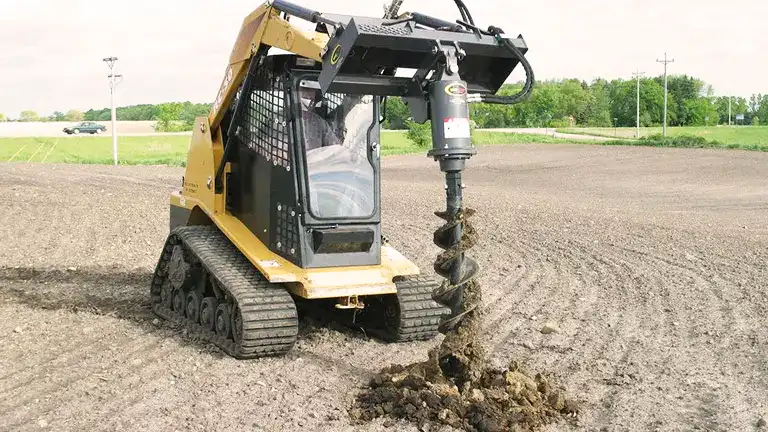
Assessing the Scope of Your Projects
The first step in choosing the right skid steer post hole digger is to assess the scope of your projects. What types of materials will you be digging through? How large and deep of holes do you need to dig? How often will you be using the attachment?
If you only need to dig a few shallow holes each year, you may be able to get away with a less expensive attachment. However, if you need to dig large and deep holes on a regular basis, you’ll need to invest in a more durable and powerful attachment.
Soil Conditions and Terrain Considerations
The soil conditions and terrain on your job site will also play a role in your decision. If you’re working with hard, rocky soil, you’ll need an attachment with a powerful auger and durable construction. If you’re working on uneven terrain, you’ll need an attachment that can handle the slopes and bumps.
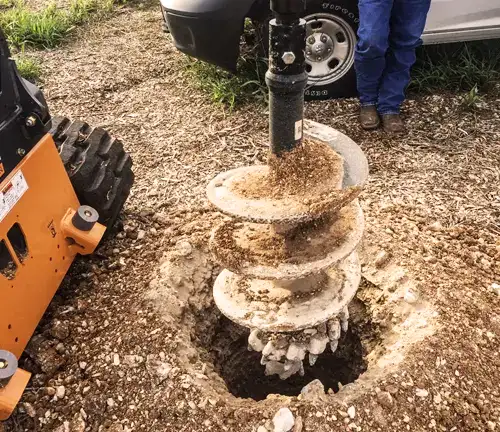
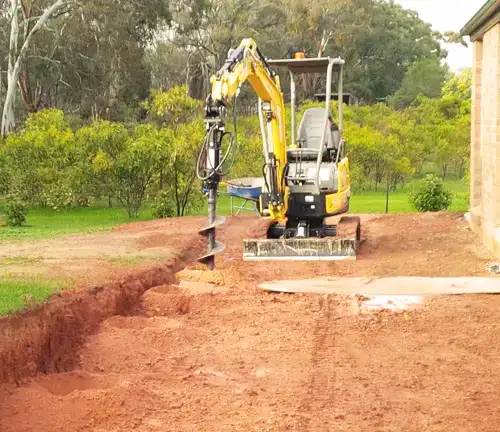
Types of Skid Steer Post Hole Diggers
Auger-type post hole diggers are the most common type of attachment. They use a large auger to drill holes into the ground. Auger-type post hole diggers are relatively inexpensive and easy to use, but they are not as powerful as hydraulic or PTO-driven attachments.
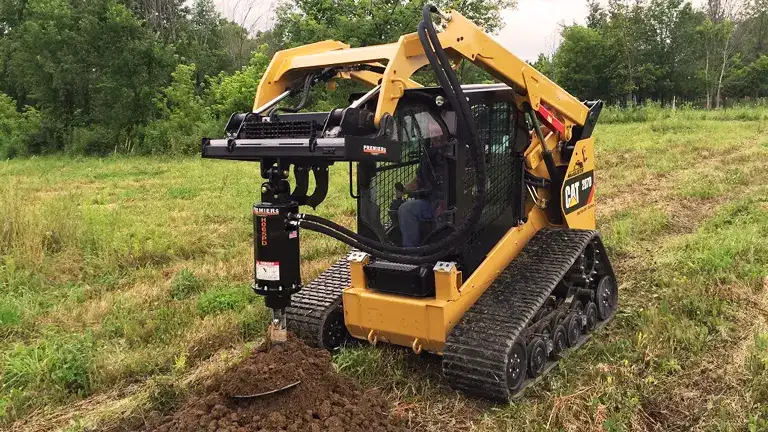
Hydraulic post hole diggers are the most powerful type of attachment. They use hydraulic power to drive the auger, which allows them to dig through even the toughest soil conditions. Hydraulic post hole diggers are more expensive than auger-type attachments, but they are also more durable and can handle larger and deeper holes.

PTO-driven post hole diggers are powered by the skid steer loader’s PTO (power take-off) shaft. They are less powerful than hydraulic post hole diggers, but they are more affordable and easier to maintain.
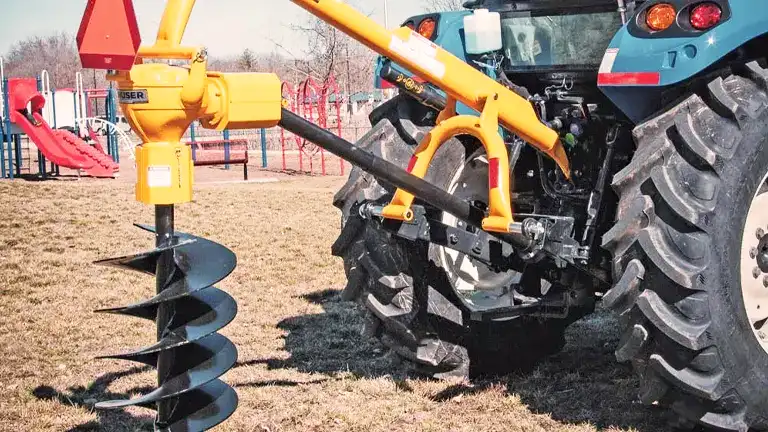
Choosing the Right Size
Size plays a pivotal role in the effectiveness of post hole diggers. Learn how to match the auger size to your specific hole requirements, achieving a delicate equilibrium between versatility and precision to meet the exact needs of your projects.
Evaluating Brand and Quality
Quality is a hallmark of reliability. When choosing a skid steer post hole digger, it is important to evaluate the brand and quality of the attachment. Look for attachments from reputable manufacturers that are known for building durable and reliable products. Here are some well-known and reputable brands in the construction equipment industry that have a good reputation for skid steer attachments for post hole diggers, including:
1. Bobcat: Bobcat is a renowned name in the construction equipment industry. They manufacture a variety of skid steer attachments, and their post hole diggers are known for durability and performance.
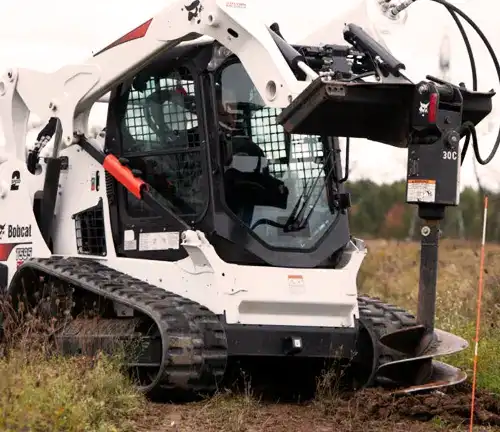
2. McMillen: McMillen is recognized for producing high-quality auger attachments, including those designed for skid steers. Their products are known for reliability and efficiency.
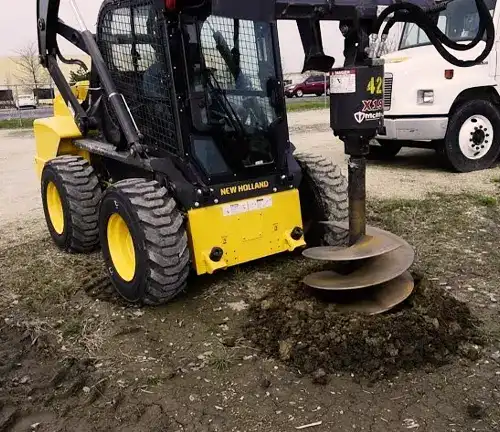
3. Danuser: Danuser is a trusted brand with a history of producing reliable attachments for skid steers, including post hole diggers. They offer a range of options suitable for different applications.
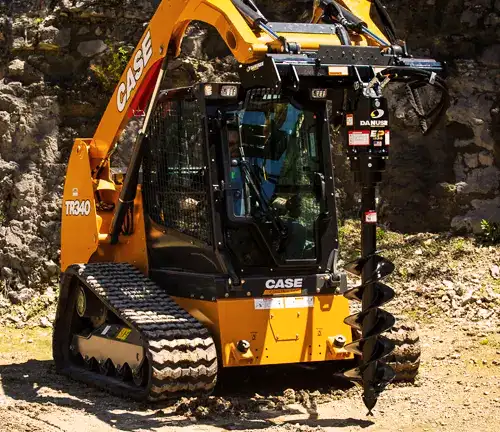
4. Blue Diamond: Blue Diamond is another leading manufacturer of skid steer post hole diggers. The company’s post hole diggers are known for their strength, durability, and ease of use. Blue Diamond also offers a variety of features and options to choose from, such as different auger sizes and hydraulics.
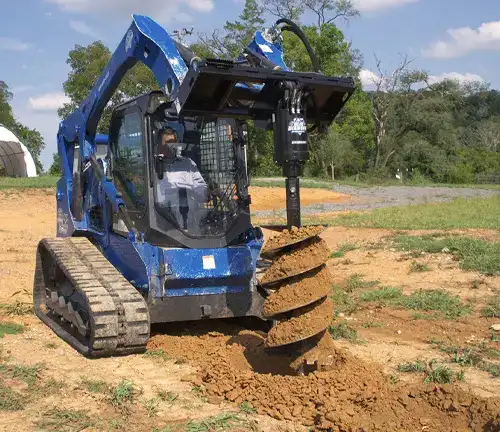
5. Titan Attachments: Titan Attachments is a leading manufacturer of skid steer attachments. The company offers a wide range of post hole diggers to choose from, including auger-type, hydraulic, and PTO-driven models. Titan Attachments post hole diggers are known for their high quality, durability, and performance.
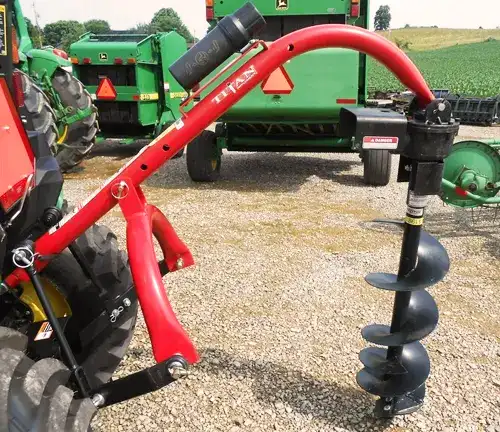
Tips for Using a Skid Steer Post Hole Digger Safely and Effectively
- Read the Operator’s Manual: Before operation, thoroughly read and understand the manufacturer’s operator manual. It provides crucial information about the specific model you are using, including safety guidelines, maintenance procedures, and operational instructions.
- Inspect the Equipment: Perform a pre-use inspection to check for any signs of wear, damage, or loose parts. Ensure that all components, including hydraulic hoses and connections, are in good condition. Address any issues promptly before operating the post hole digger.
- Wear Proper Safety Gear: Personal protective equipment (PPE) is vital. Wear appropriate safety gear, including a hard hat, safety glasses, gloves, and steel-toed boots to protect yourself from potential hazards.
- Secure the Work Area: Clear the work area of obstacles, debris, or bystanders. Establish a perimeter to ensure that no one is within the swinging radius of the auger. Communicate with other workers in the vicinity to create awareness of the operation.
- Adjust Skid Steer Settings: Ensure that your skid steer is properly configured for the post hole digging task. Follow the manufacturer’s recommendations for hydraulic flow settings and other specifications to optimize the performance of the post hole digger.
- Position the Skid Steer Properly: Position the skid steer on level ground before engaging the post hole digger. Ensure that the machine is stable to prevent tipping during the digging process. If the terrain is uneven, use leveling blocks to stabilize the skid steer.
- Select the Right Auger Size: Match the auger size to the specific hole requirements. Using the correct size auger enhances efficiency and minimizes strain on the equipment, resulting in smoother and faster digging.
- Control Depth and Angle: Exercise precise control over the depth and angle of the auger during the digging process. Avoid forcing the auger into the ground, as this can strain the equipment and lead to unnecessary wear. Gradually increase depth as needed.
- Be Cautious of Underground Utilities: Before digging, verify the location of underground utilities to avoid accidental damage. Use utility locators or consult relevant authorities to identify the presence of cables, pipes, or other infrastructure.
- Monitor Hydraulic Systems: Keep an eye on the skid steer’s hydraulic systems during operation. Unusual noises, vibrations, or fluid leaks may indicate a problem. If any issues arise, cease operations immediately and address the problem before continuing.
- Follow Shut Down Procedures: After completing the digging task, follow the manufacturer’s recommended shut down procedures. Lower the auger to the ground, disengage any hydraulic connections, and turn off the skid steer.
Budget Considerations
When selecting a skid steer post hole digger, navigating budget considerations is crucial. Establish a clear budget based on project needs, frequency of use, and task complexity. Avoid compromising quality for cost, as it may lead to increased maintenance and inefficiencies. Explore models and brands within your budget known for durability. Inquire about warranties and after-sales support for added value. Balancing budget considerations with quality ensures a satisfactory investment in a skid steer post hole digger tailored to your specific needs.
Maintenance and Serviceability
Ensuring the longevity and optimal performance of a skid steer post hole digger rests heavily on considerations of maintenance and serviceability. When navigating the market for the right equipment, prioritizing models that offer straightforward maintenance procedures is a strategic move. Routine checks on critical components, such as hydraulic systems, gearboxes, and auger bits, are imperative to catch potential issues early on. Seek features that facilitate easy access to key areas, simplifying the process of regular upkeep. Equally vital is the availability of replacement parts, a factor that can significantly impact the downtime in case of wear or damage. As part of your decision-making process, delve into user reviews to glean real-world insights into the ease of maintenance and overall serviceability of the post hole digger. By placing emphasis on maintenance and serviceability, your chosen equipment not only excels in the field but also proves itself as a lasting and reliable investment in the efficiency of your projects. Here are the additional list of considerations and factors about Maintenance and Serviceability when choosing Skid Steer Post Hole Digger:
- Accessible Components: Prioritize models with easy access to key components such as hydraulic systems, gearboxes, and auger bits, simplifying routine maintenance tasks.
- Replacement Parts Availability: Ensure that the manufacturer provides readily available replacement parts, minimizing downtime in case of wear or damage.
- User-Friendly Design: Look for a user-friendly design that simplifies the maintenance process, making it easier for operators to conduct routine checks and address minor issues.
- Clear Maintenance Instructions: Choose a skid steer post hole digger that comes with clear and comprehensive maintenance instructions in the operator’s manual, aiding operators in performing routine checks and upkeep.
- Customer Reviews: Explore user reviews to gain insights into real-world experiences with the maintenance and serviceability of the post hole digger, helping inform your decision based on practical feedback.
- Manufacturer Support: Consider the level of support provided by the manufacturer, including customer service, warranty options, and assistance with technical issues, ensuring ongoing serviceability.
Overall Conclusion
In the quest to choose the right skid steer post hole digger, a thoughtful approach is essential for project success. Assessing the scope of your projects, understanding soil conditions, and considering terrain variations are foundational steps. Exploring the types of post hole diggers available, selecting the right size, and evaluating brand and quality are critical factors that impact efficiency. Tips for safe and effective usage, budget considerations, and insights into maintenance and serviceability complete the comprehensive guide. Striking the delicate balance between budget constraints and the need for quality ensures a well-informed decision. Ultimately, in the hands of a discerning operator, the chosen post hole digger becomes not just a tool but a reliable partner, facilitating seamless digging operations while contributing to the longevity and productivity of construction or landscaping projects.

Frequently Asked Questions (FAQs)
- Can I use the same post hole digger for all types of soil?
While some post hole diggers are versatile, it’s essential to match the auger type to the specific soil conditions you’ll encounter. For hard or rocky soils, a specialized rock auger may be necessary. - What factors determine the right size for my skid steer post hole digger?
The size of your post hole digger should align with the diameter and depth of the holes you need. It’s crucial to assess your project requirements to choose the appropriate size. - How do I verify the compatibility of a post hole digger with my skid steer model?
Skid steers have varying hydraulic flow capacities. It’s important to check that the post hole digger you choose is compatible with the hydraulic flow requirements of your specific skid steer. - What kind of maintenance is typically required for a skid steer post hole digger, and how often?
Maintenance requirements can vary, but routine checks on hydraulic systems, gearboxes, and auger bits are essential. Maintenance frequency depends on usage and the manufacturer’s recommendations. - What’s the best way to locate underground utilities before using a post hole digger?
It’s crucial to use utility locators or consult local authorities to identify and mark the presence of underground utilities before digging. This precaution prevents accidental damage and potential hazards during operation.
In the world of construction and landscaping, choosing the right skid steer post hole digger is pivotal for project success. From assessing project needs to considering soil types and maintenance requirements, this guide offers insights to navigate this decision thoughtfully. By balancing factors like size, type, brand, and budget, one can ensure a harmonious blend of efficiency and longevity in digging operations. As you embark on selecting the ideal post hole digger, may these insights empower you to make a lasting investment in the seamless execution of your endeavors.

Benjamin Brooks
Forestry AuthorGreetings! I'm Benjamin Brooks, and my journey over the past 15 years has revolved around the fascinating realms of content creation, expertise in snow clearing, and the intricate world of lumberjacking and landscaping. What began as a simple curiosity about the natural world and heavy machinery has evolved into a passionate profession where my love for crafting words intertwines seamlessly with my lumberjacking and garden skills.


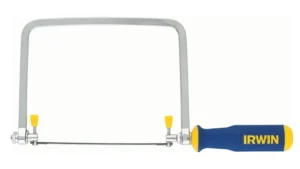
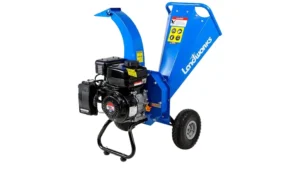
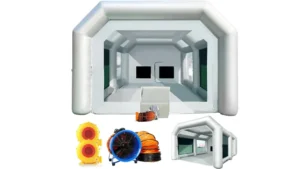
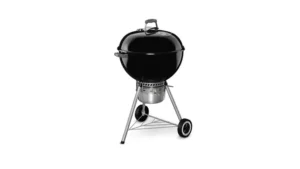
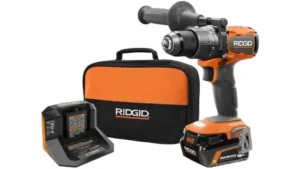
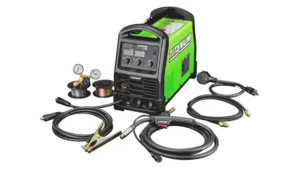

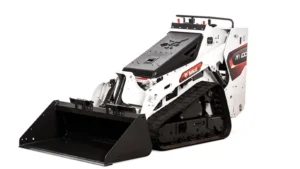

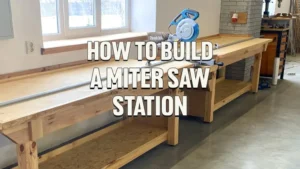
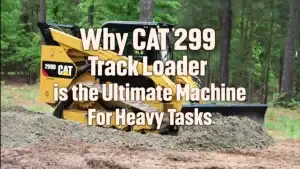
Leave your comment